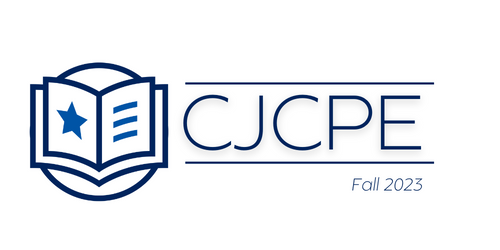Abstract
Abstract
Introduction: Psychiatric mental health nurse practitioner (PMHNP) programs must create learning environments conducive to interprofessional teams to prepare PMHNP
students for their expert roles. Interprofessional Education (IPE) activities are ideal for simulating the collaborative practice environment. Within IPE activities, students must learn to care for patients' physical and mental health needs across their lifespans.
Problem: The institution needed IPE offerings highlighting patient diversity, equity, and social determinants of health when providing interprofessional care.
Methods: University faculty developed an interprofessional simulation to evaluate healthcare students' attitudes and perceptions of interprofessional collaboration when exposed to a simulated patient scenario of a vulnerable older adult with complex medical and
psychiatric comorbidities from a diverse background. PMHNP students, supported by an interprofessional healthcare team of adult acute-care nurse practitioner, pharmacy, and occupational therapy students, were presented with a vulnerable older adult case scenario. The team engaged in a simulation activity with a standardized patient to assess the patient's needs and develop an interprofessional treatment plan.
Results: Paired-sample t-tests of the students' interprofessional perceptions, as scored by the SPICE-R2 tool, showed a statistically significant improvement in the total score and two of three subscale measurements. The students demonstrated strong team performance, as measured by the C-ICE instrument. Focus groups provided positive feedback regarding the standardized patient interaction and the collaborative platform for the activity. The students demonstrated consideration of the patient's social determinants of health when creating their interprofessional care plan. Due to time limitations and a greater focus on acute medical needs, students did not incorporate the standardized patient's culture and ethnicity as priorities when developing a care plan.
Conclusion: This activity gave PMHNP students a unique interprofessional learning opportunity to care for a vulnerable older adult with complex medical and psychiatric needs.
Keywords: older adult, psychiatric mental health nurse practitioner, interprofessional education, simulation, social determinants of health, cultural diversity
References
References
van Diggele, C., Roberts, C., Burgess, A., Mellis, C. Interprofessional education: tips for design and implementation. BMC Medical Education. 2020;20(S2). doi:10.1186/s12909-020-02286-z
Committee on Measuring the Impact of Interprofessional Education on Collaborative Practice and Patient Outcomes, Board on Global Health, Institute of Medicine. Measuring the impact of interprofessional education on collaborative practice and patient outcome. National Academies Press; 2015
Interprofessional Education Collaborative. Core competencies for interprofessional
collaborative practice: 2016 update. https://www.ipecollaborative.org/assets/2016-Update.pdf. Updated 2016. Accessed November 12, 2022
Iverson, L., Todd, M., Haddad, AR., Packard, K, Begley, K, Doll, J. Hawkins, K, Laughlin, A. Manz, J. & Wichman, C. The development of an instrument to evaluate
interprofessional student team competency. Journal of Interprofessional Care. 2018;32(5):531-538. doi:10.1080/13561820.2018.1447552
Guck, T.P., Potthoff, M.R., Walters, R.W., Doll, J., Greene, M.A., & Defreece, T. Improved outcomes associated with interprofessional collaborative practice. Annals of Family Medicine. 2019;17(S82). doi:10.1370/afm.2428
Reeves, S., Perrier, L., Goldman, J., Freeth, D., & Zwarenstein, M. Interprofessional education: effects on professional practice and healthcare outcomes. 2013(3)
Ogrinc G, Davies L, Goodman D, Batalden PB, Davidoff F, Stevens D. SQUIRE 2.0 (Standards for QUality Improvement Reporting Excellence): Revised publication guidelines from a detailed consensus process. BMJ Quality and Safety. 2016;25:986-992
Aebersold, M.L., Paige, J.B., Graham, L. M., Schram, A.P., Decker, S.I., Lioce, L. INACSL
standards of best practice for simulation: past, present, and future. Nursing Education Perspectives. ;36(5):294-298. doi:10.5480/15-1670
Accreditation Council for Pharmacy Education. Accreditation standards and key elements for the professional program in pharmacy leading to the Doctor of Pharmacy
degree. https://www.acpe-accredit.org/pdf/Standards2016FINAL.pdf. Updated 2016. Accessed November 12, 2022
2018 Accreditation Council for Occupational Therapy Education (ACOTE) Standards and
Interpretive Guide. American Journal of Occupational Therapy. 2018;72(S2):1-83. doi:10.5014/ajot.2018.72S217
Dominquez DG, Fike DS, MacLaughlin ES, Zorek JA. A comparison of the validity of two
instruments assessing health professional student perceptions of interprofessional
education and practice. Journal of Interprofessional Care. 2015;29(2):144-149
Zorek, J. A., Fike, D. S., Eickhoff, J. C., Engle, J. A., MacLaughlin, E. J., Dominguez, D. G., Seibert, C. S. Refinement and validation of the student perceptions of physician-
pharmacist interprofessional clinical education instrument. American Journal of Pharmaceutical Education. 2016;80(3). doi:10.5688/ajpe80347
Brisolara KF, Culbertson R, Levitzky E, Mercante DE, Smith DG, Gunaldo TP. Supporting health system transformation: the development of an integrated interprofessional curriculum inclusive of public health students. Journal of Health Administration Education. 2019;36(1):111-121. https://www.ncbi.nlm.nih.gov/pmc/articles/PMC6959473/pdf/nihms-1063667.pdf
Zigmont, J.J., Kappus, L.J., & Sudikoff, S.N. The 3D model of debriefing: defusing, discovering, and deepening. Seminars in Perinatology. 2011;35(2):52-58. doi:10.1053/j.semperi.2011.01.003
University of Kansas Medical Center. General interprofessional debriefing questions facilitator guide. https://srf.kumc.edu/documents/ciper/General%20Interprofessional%20Debriefing%20Questions%20Facilitator%20Guide.pdf. Updated 2022. Accessed October 5, 2022

